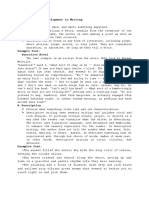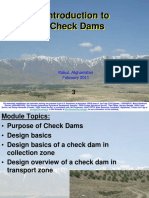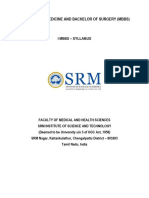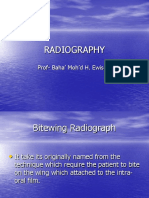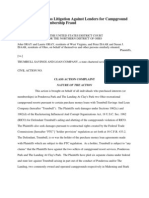0% found this document useful (0 votes)
44 views21 pagesL3 Pattern of Development
The document outlines various patterns of development in writing, including narration, description, definition, exemplification, comparison and contrast, cause and effect, problem-solution, and persuasion. Each pattern is explained with its purpose, structure, and examples to guide writers in effectively developing their ideas. Familiarity with transitional expressions and conscious strategy selection is emphasized as key to successful writing.
Uploaded by
aldaveanna84Copyright
© © All Rights Reserved
We take content rights seriously. If you suspect this is your content, claim it here.
Available Formats
Download as PPTX, PDF, TXT or read online on Scribd
0% found this document useful (0 votes)
44 views21 pagesL3 Pattern of Development
The document outlines various patterns of development in writing, including narration, description, definition, exemplification, comparison and contrast, cause and effect, problem-solution, and persuasion. Each pattern is explained with its purpose, structure, and examples to guide writers in effectively developing their ideas. Familiarity with transitional expressions and conscious strategy selection is emphasized as key to successful writing.
Uploaded by
aldaveanna84Copyright
© © All Rights Reserved
We take content rights seriously. If you suspect this is your content, claim it here.
Available Formats
Download as PPTX, PDF, TXT or read online on Scribd
/ 21




















































